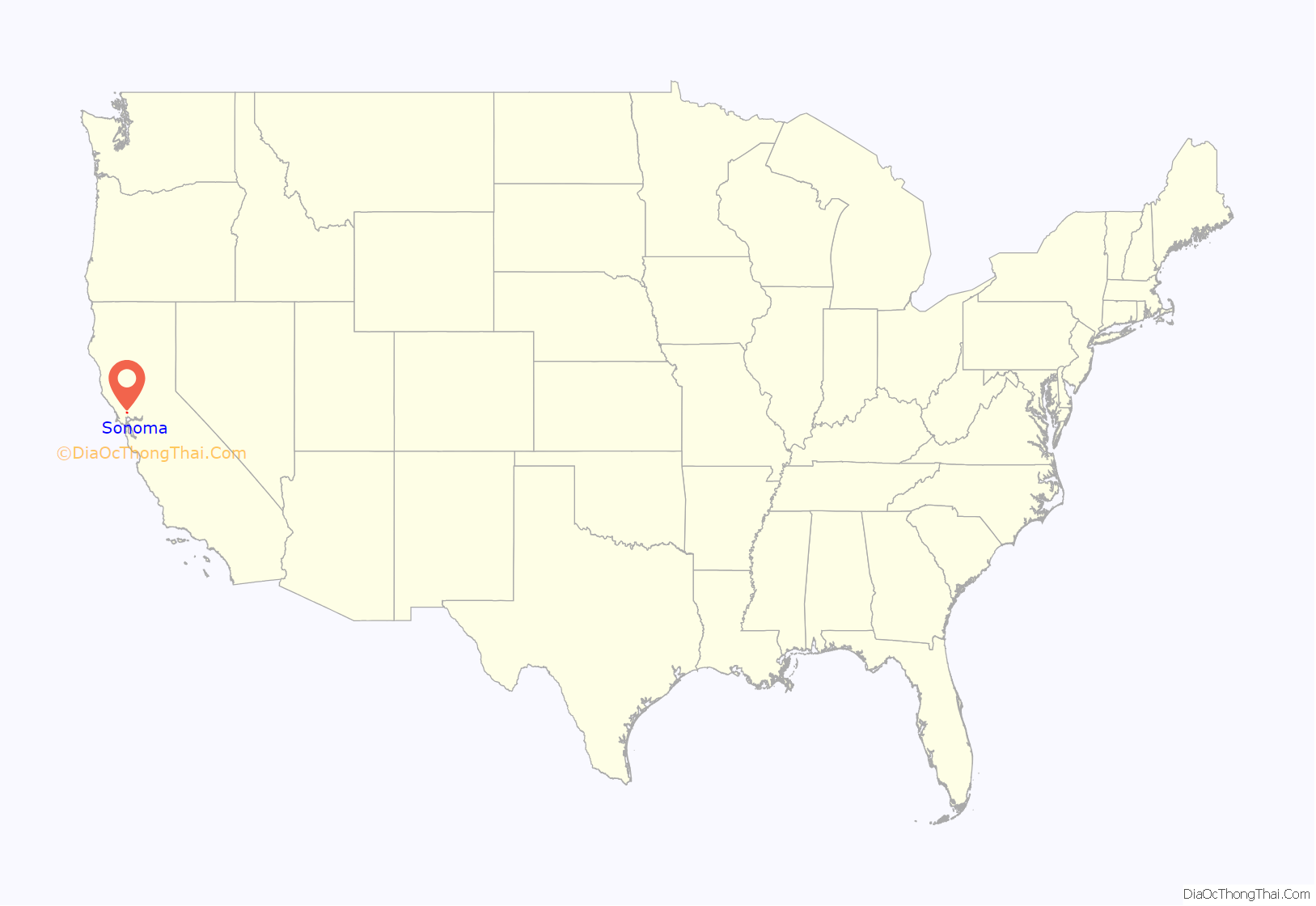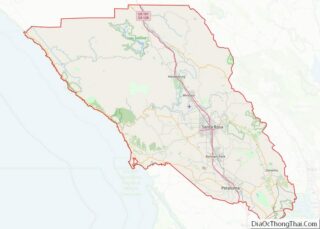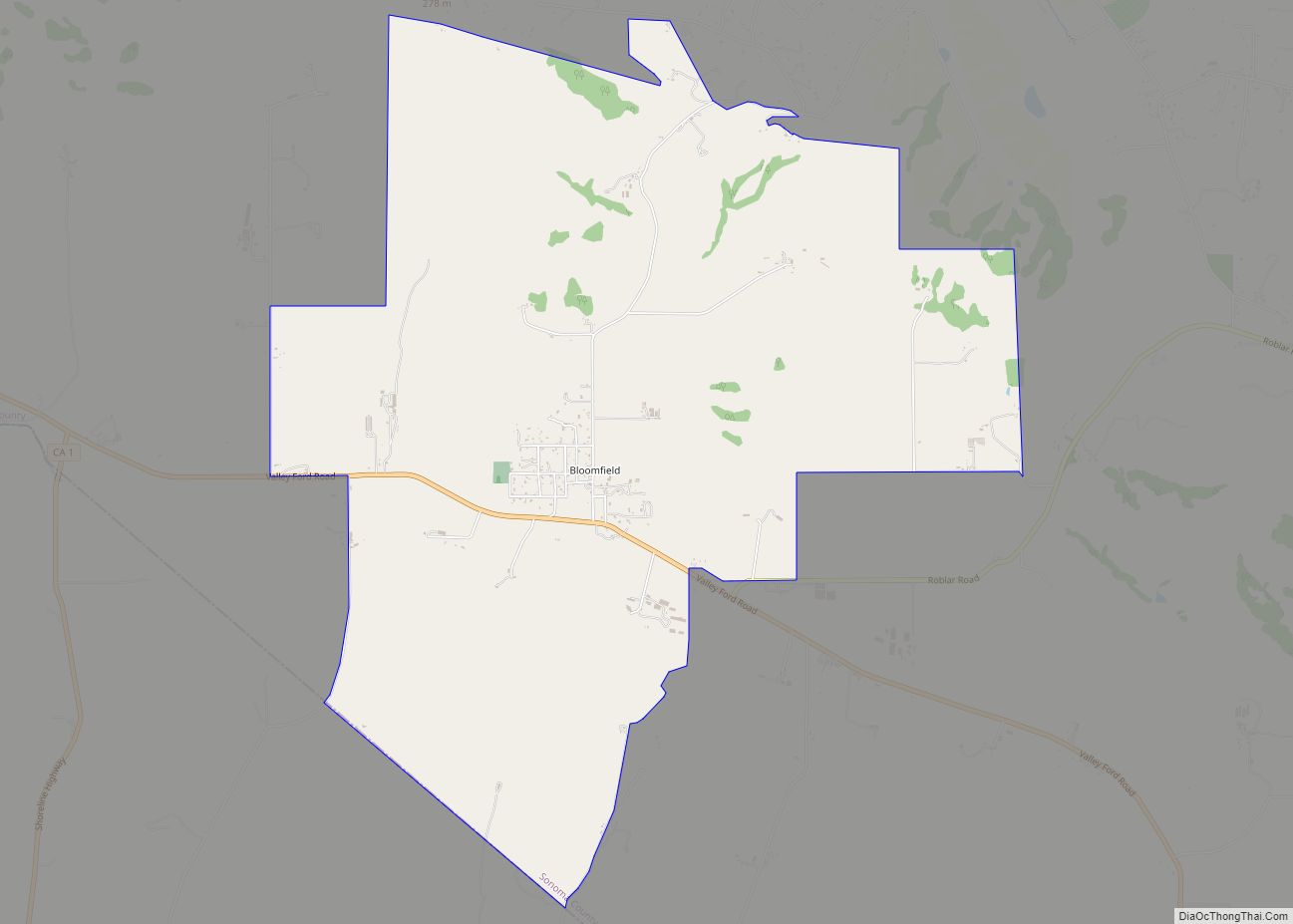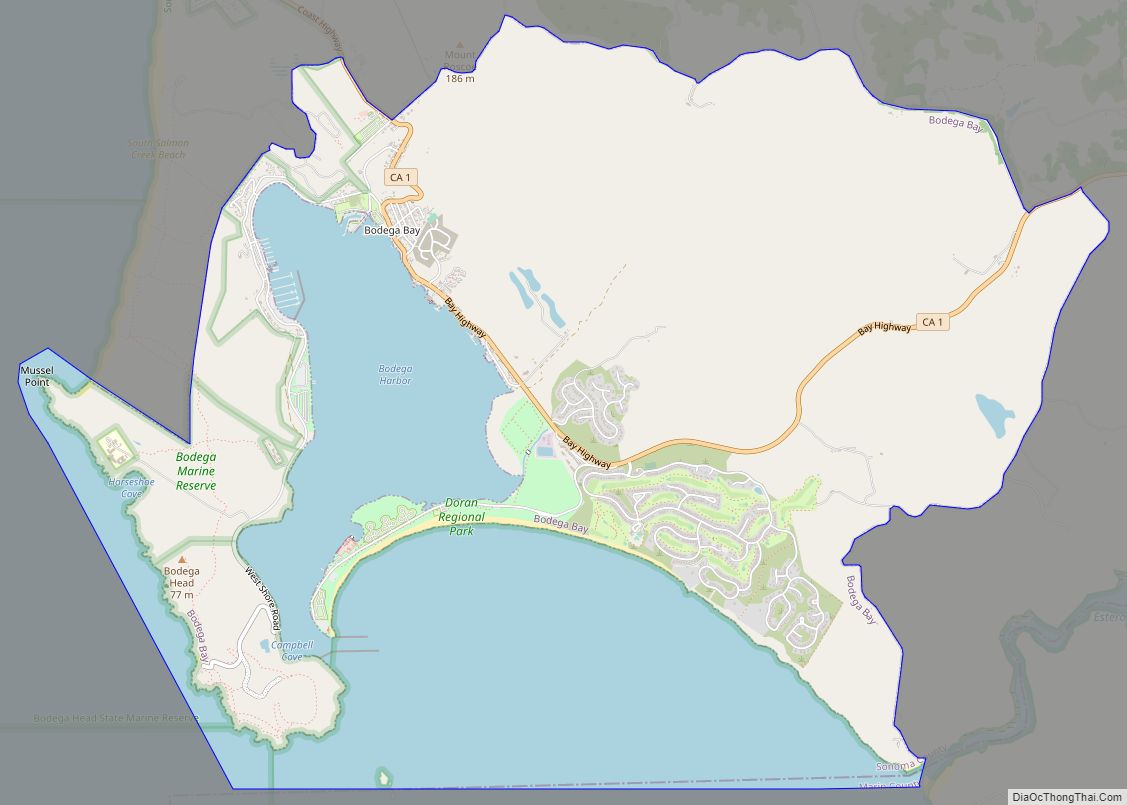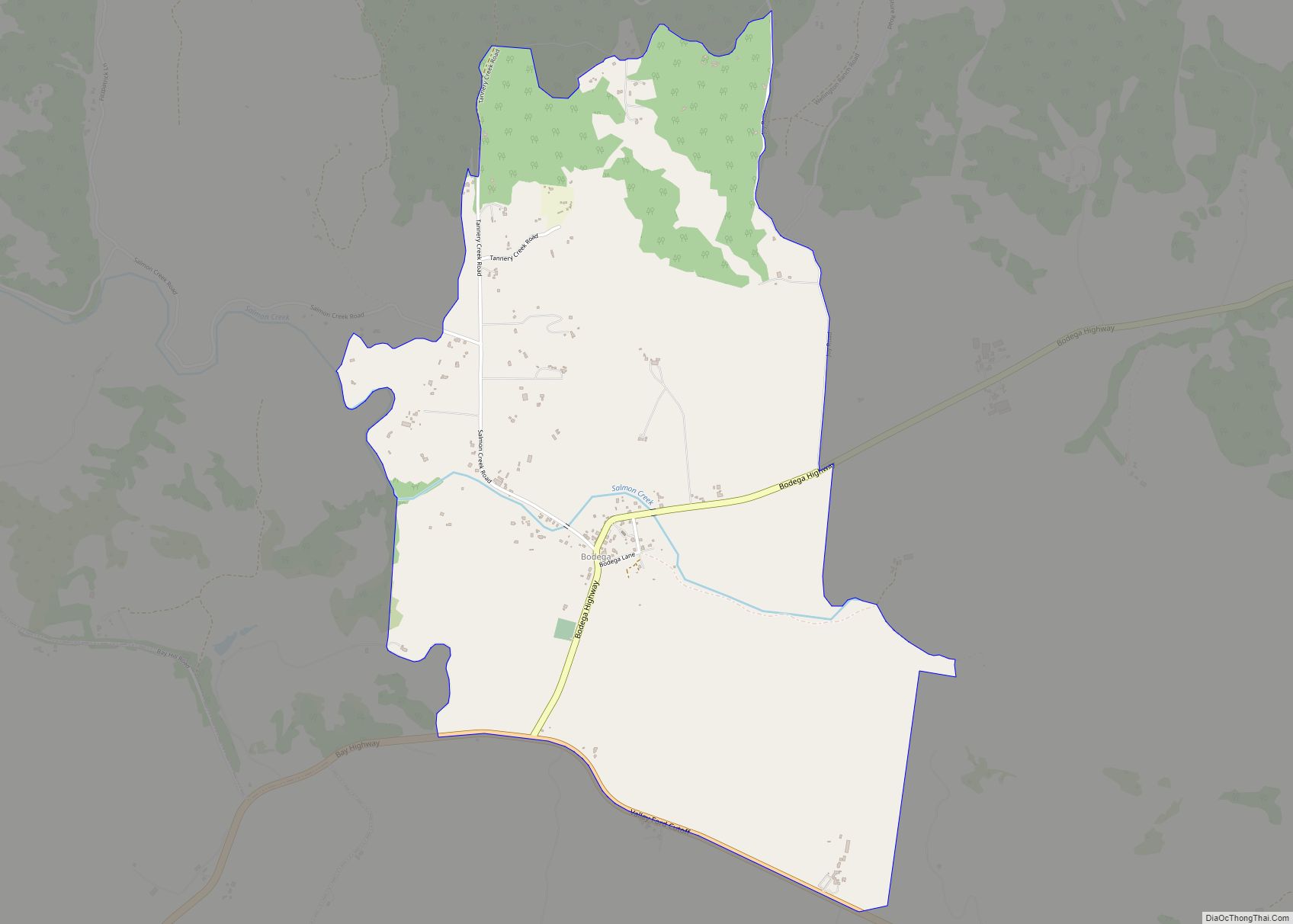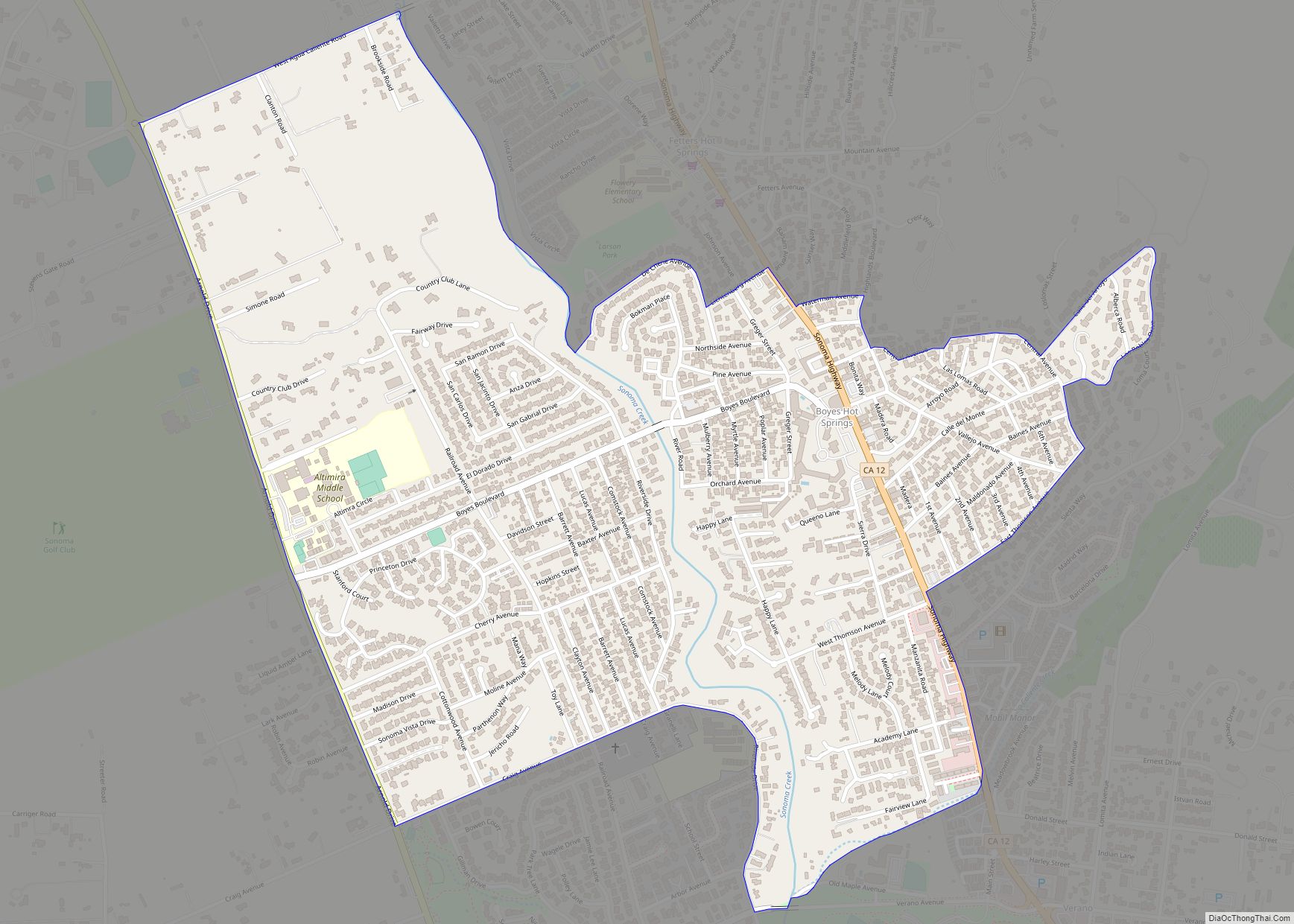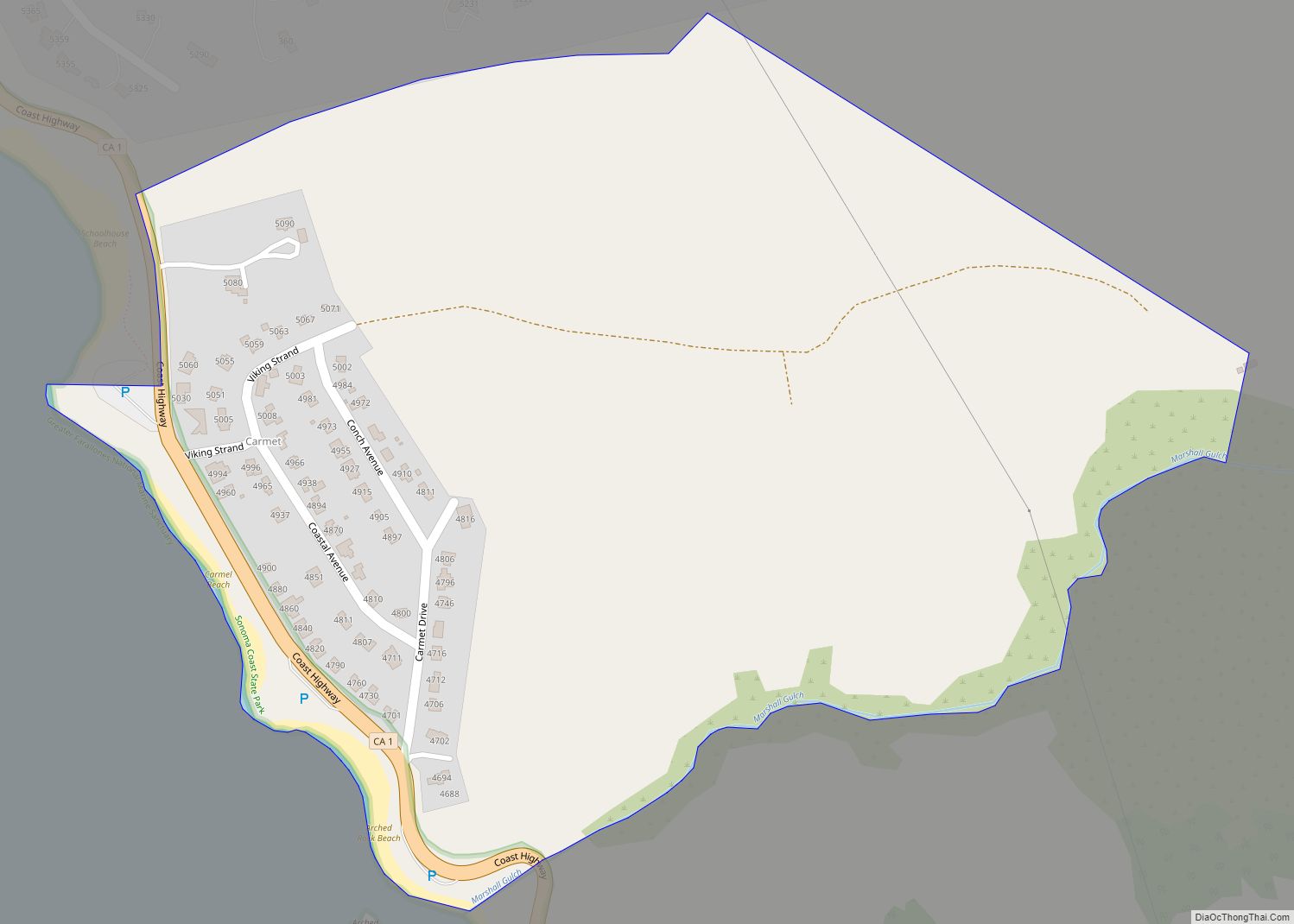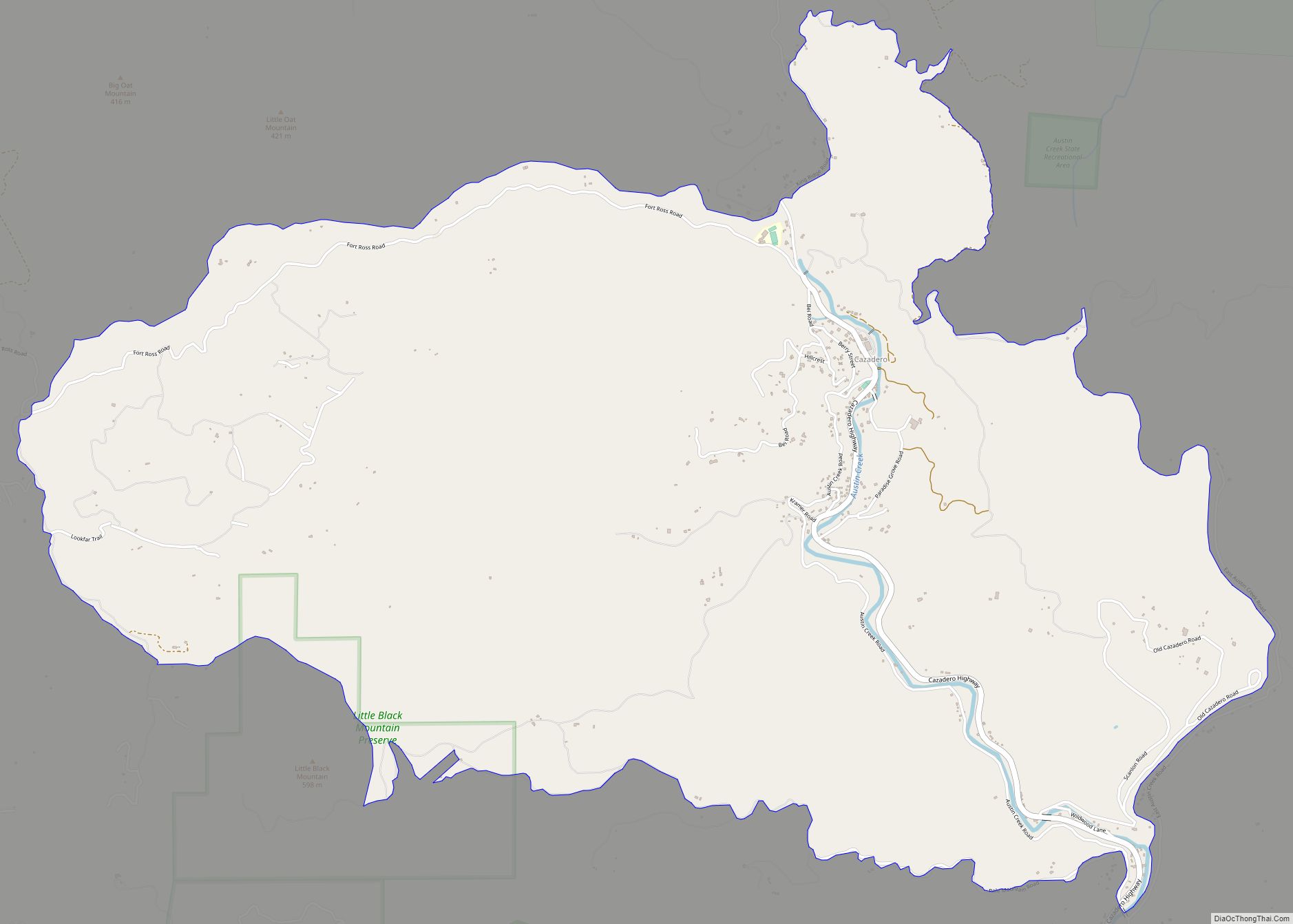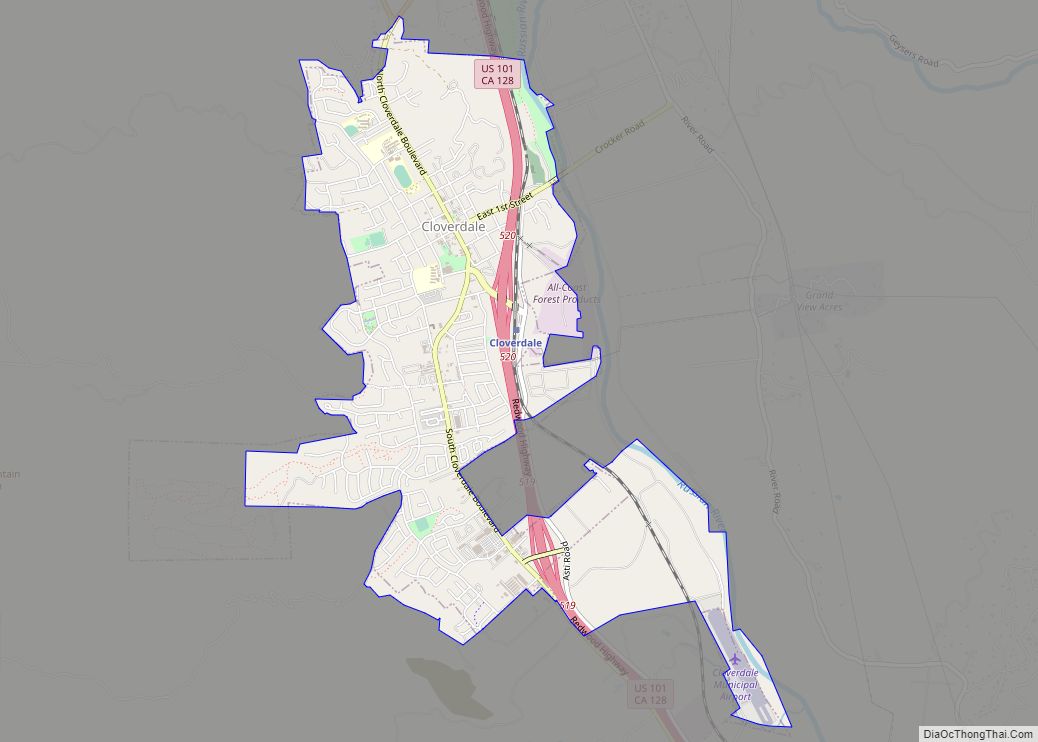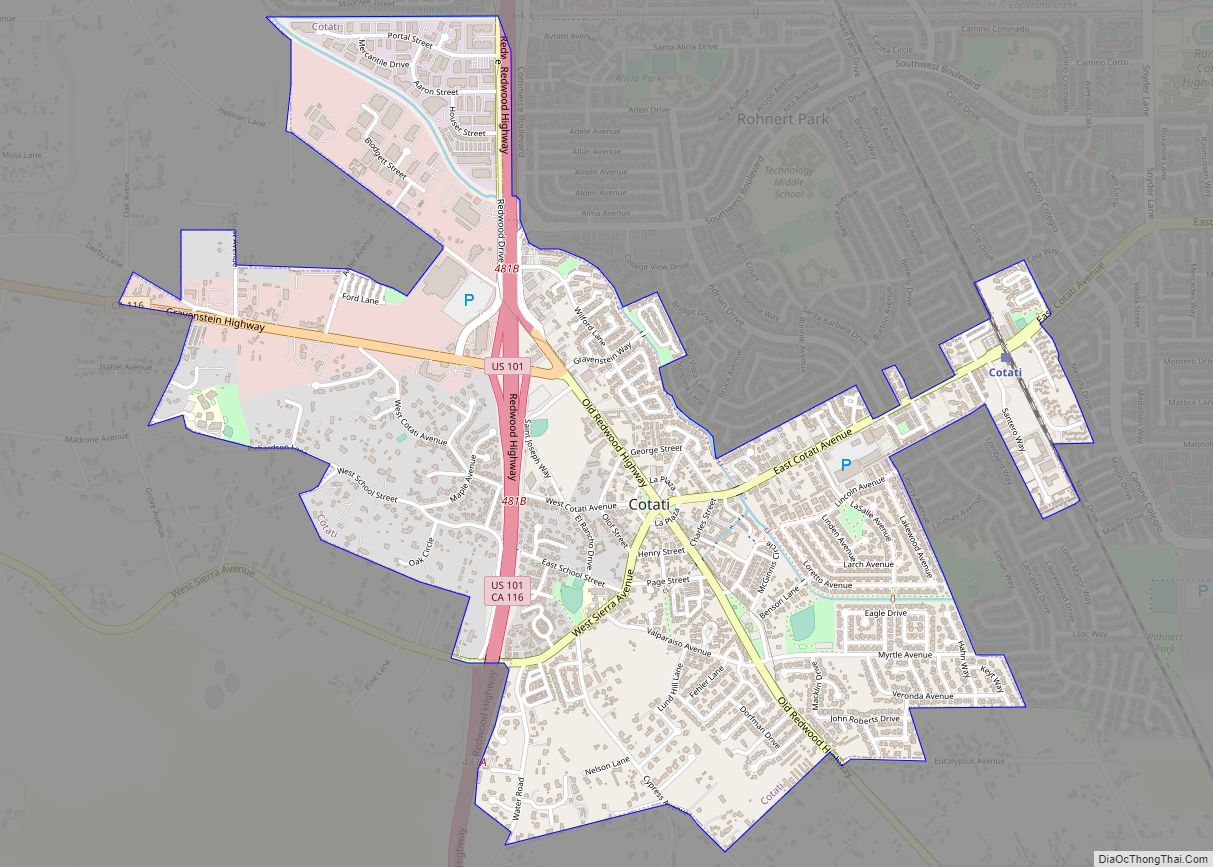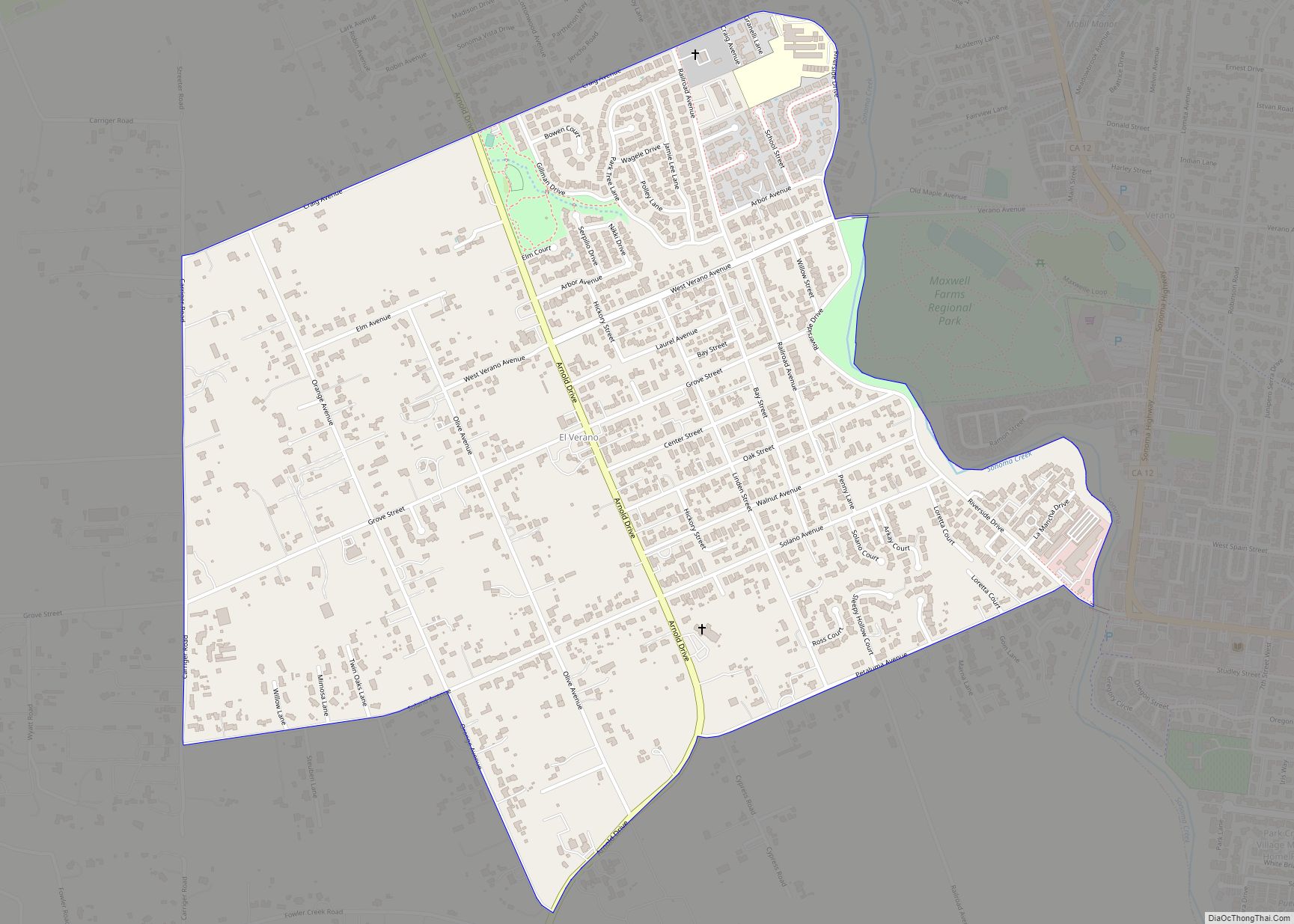Sonoma is a city in Sonoma County, California, United States, located in the North Bay region of the San Francisco Bay Area. Sonoma is one of the principal cities of California’s Wine Country and the center of the Sonoma Valley AVA. Sonoma’s population was 10,739 as of the 2020 census, while the Sonoma urban area had a population of 32,679. Sonoma is a popular tourist destination, owing to its Californian wineries, noted events like the Sonoma International Film Festival, and its historic center.
Sonoma’s origins date to 1823, when José Altimira established Mission San Francisco Solano, under the direction of Governor Luis Antonio Argüello. Following the Mexican secularization of the missions, famed Californio statesman Mariano G. Vallejo founded Sonoma on the former mission’s lands in 1835. Sonoma served as the base of General Vallejo’s operations until the Bear Flag Revolt in 1846, when American filibusters overthrew the local Mexican government and declared the California Republic, ushering in the American Conquest of California.
| Name: | Sonoma city |
|---|---|
| LSAD Code: | 25 |
| LSAD Description: | city (suffix) |
| State: | California |
| County: | Sonoma County |
| Incorporated: | September 3, 1883 |
| Elevation: | 85 ft (26 m) |
| Land Area: | 2.74 sq mi (7.11 km²) |
| Water Area: | 0.00 sq mi (0.00 km²) 0% |
| Population Density: | 4,017.49/sq mi (1,551.39/km²) |
| ZIP code: | 95476 |
| Area code: | 707 |
| FIPS code: | 0672646 |
| Website: | www.sonomacity.org |
Online Interactive Map
Click on ![]() to view map in "full screen" mode.
to view map in "full screen" mode.
Sonoma location map. Where is Sonoma city?
History
When the first Europeans arrived, the area was near the northeast corner of the Coast Miwok territory, with Southern Pomo to the northwest, Wappo to the northeast, Suisunes and Patwin peoples to the east.
Mission era
Mission San Francisco Solano is the direct predecessor to the founding of Sonoma. The mission, the only to be constructed not by the Spanish but by the Mexican authorities, was built as part of a larger plan Governor Luis Antonio Argüello had devised to fortify Mexican presence north of San Francisco Bay and thus deter Russian encroachment into the region. Franciscan padre José Altimira worked with Governor Argüello to plan the mission, against the desires of José Francisco de Paula Señan, then the President-General of the Californian missions, who disapproved of government intervention into religious matters.
In 1833 the Mexican Congress passed the Mexican secularization act of 1833, effectively nationalizing all the missions and associated lands of the Catholic church in California, which the goal of diminishing the church’s highly influential standing in California’s economy and political system. Governor José Figueroa appointed Mariano Guadalupe Vallejo, then the Commandant of the Presidio of San Francisco, as administrator (comisionado) to oversee the closing of Mission San Francisco Solano and its conversion into a civilian town.
General Vallejo era
Governor Figueroa had received instructions from the Mexican Congress to establish a strong presence in the region north of the San Francisco Bay to protect the area from encroachments of foreigners. An immediate concern was the further eastward movement of the Russian America Company from their settlements at Fort Ross and Bodega Bay on the California coast.
Figueroa’s next step in implementing his instructions was to name Lieutenant Vallejo as Military Commander of the Northern Frontier and to order the soldiers, arms and materiel at the Presidio of San Francisco moved to the site of the recently secularized Mission San Francisco Solano. The Sonoma Barracks were built to house the soldiers. Until the building was habitable, the troops were housed in the buildings of the old Mission. In 1834, George C. Yount, the first Euro-American permanent settler in the Napa Valley, was employed as a carpenter by General Vallejo.
The Governor granted Lieutenant Vallejo the initial lands (approximately 44,000 acres (178 km)) of Rancho Petaluma immediately west of Sonoma. Vallejo was also named Director of Colonization which meant that he could initiate land grants for other colonists (subject to the approval of the governor) and the diputación (Alta California’s legislature).
Vallejo had also been instructed by Governor Figueroa to establish a pueblo at the site of the old Mission. In 1835, with the assistance of William A. Richardson, he laid out, in accordance with the Spanish Laws of the Indies, the streets, lots, central plaza and broad main avenue of the new Pueblo de Sonoma.
Although Sonoma had been founded as a pueblo in 1835, it remained under military control, lacking the political structures of municipal self-government of other Alta California pueblos. In 1843, Lieutenant Colonel Vallejo wrote to the Governor recommending that a civil government be organized for Sonoma. A town council (ayuntamiento) was established in 1844 and Jacobo Leese was named first alcalde, and Cayetano Juárez second alcalde.
Bear Flag Revolt
Before dawn on Sunday, June 14, 1846, thirty-three Americans, already in rebellion against the Alta California government, arrived in Sonoma. Some of the group had traveled from the camp of U.S. Army Brevet Captain John C. Frémont who had entered California illegally in late 1845 with his exploration and mapping expedition. Others had joined along the way. As the number of immigrants arriving in California had swelled, the Mexican government barred them from buying or renting land and threatened them with expulsion because they had entered without official permission. Mexican officials were concerned about the coming war with the United States coupled with the growing influx of American immigrants into California.
A group of rebellious Americans had departed from Frémont’s camp on June 10 and captured a herd of 170 Mexican government-owned horses being moved by Californio soldiers from San Rafael and Sonoma to Alta California’s Commandante General José Castro in Santa Clara. The insurgents next determined to seize the weapons and materiel stored in the Sonoma Barracks and to deny Sonoma to the Californios as a rallying point north of San Francisco Bay.
Meeting no resistance, they approached the home of General Vallejo, who invited the filibusters’ leaders into his home to negotiate terms. However, when the agreement was presented to those outside they refused to endorse it. Rather than releasing the Mexican officers under parole, they insisted they be held as hostages. William Ide gave an impassioned speech urging the rebels to stay in Sonoma and start a new republic. Afterwards, Vallejo and his three associates were taken as prisoners and placed on horseback and taken to Frémont.
The Sonoma Barracks became the headquarters for the remaining twenty-four rebels, who within a few days created their Bear Flag. After the flag was raised Californios called the insurgents Los Osos (The Bears) because of their flag and in derision of their often scruffy appearance. The rebels embraced the expression, and their uprising became known as the Bear Flag Revolt. There were some small unit skirmishes between the Bears and the Californios but no major confrontations.
After hearing reports that General José Castro was preparing to attack Sonoma, Frémont left Sutter’s Fort with his forces for Sonoma. There he called a meeting with “the Bears” and united his forces with the revolters to form a single military unit. Frémont then took the majority of the men back to Sutter’s Fort and left fifty men to defend Sonoma. The Bear Flag Revolt ended and the California Republic ceased to exist on July 9 when Lieutenant Joseph Warren Revere of the U.S. Navy raised the United States flag in front of the Sonoma Barracks.
Post-Conquest era
Following the American Conquest of California and the advent of the California Gold Rush, local businesses prospered with the business brought by the soldiers as well as miners traveling to and from the gold fields. The prosperity and optimism about Sonoma’s future promoted land speculation which was particularly problematic because of the cloudy records regarding land ownership.
Vallejo had granted land by virtue of his office as Director of Colonization before the pueblo was organized. Among the traditional duties of Alta California’s alcaldes was the selling of town lots. Political factions backed different Sonoma alcaldes (John H. Nash, supported by American immigrants, and Lilburn Boggs supported by Vallejo and the Californios) made the situation more complex. Some property was sold more than once. A valid land sale depended on proof of the seller’s chain of title. Over thirty years of lawsuits were required before land owners in Sonoma were able to obtain clear titles.
When the U.S. military occupation of California ended in 1850, when California was admitted as a state, Sonoma was named the county seat for Sonoma County. About that time the flow of miners had slowed and the U.S. Army was leaving Sonoma. Business in Sonoma moved into a recession in 1851. Surrounding towns such as Petaluma and Santa Rosa were developing and gaining population faster than Sonoma. An 1854 special election moved the county seat and its entailed economic activity to Santa Rosa.
Contemporary era
The United States Navy operated a rest center at the Mission Inn through World War II.
Parts of Wes Craven’s Scream (1996) were filmed in the city, with shots of the Sonoma Community Center masked as Westboro High School.
Sonoma Road Map
Sonoma city Satellite Map
Geography
The city is situated in the Sonoma Valley, with the Mayacamas Mountains to the east and the Sonoma Mountains to the west, with the prominent landform Sears Point to the southwest. Sonoma has an area of 2.7 sq mi (7.0 km).
The principal watercourse in the town is Sonoma Creek, which flows in a southerly direction to discharge ultimately to the Napa Sonoma Marsh; Arroyo Seco Creek is a tributary to Schell Creek with a confluence in the eastern portion of the town. The active Rodgers Fault lies to the west of Sonoma Creek; however, the risk of major damage is mitigated by the fact that most of the soils beneath the city consist of a slight alluvial terrace underlain by strongly cemented sedimentary and volcanic rock. To the immediate south, west and east are deeper rich, alluvial soils that support valuable agricultural cultivation. The mountain block to the north rises to 1,200 feet (366 m) and provides an important scenic backdrop.
Climate
Sonoma has a typical lowland near-coastal Californian warm-summer mediterranean climate (Köppen climate classification Csb) with hot, dry summers (although nights are comfortably cool) and cool, wet winters. In January, the normal high is 57.2 °F (14.0 °C) and the typical low is 37.2 °F (2.9 °C). In July, the normal high is 88.6 °F (31.4 °C) and the normal low is 51.2 °F (10.7 °C). There are an average of 58.1 days with highs of 90 °F (32 °C) or higher and 12.1 days with highs of 100 °F (38 °C). The highest temperature on record was 116 °F (47 °C) on July 13, 1972, and the lowest temperature was 13 °F (−11 °C) on December 22, 1990. Normal annual precipitation is 29.43 inches (748 mm). The wettest month on record was 20.29 inches (515 mm) in January 1995. The greatest 24-hour rainfall was 6.75 inches (171 mm) on January 4, 1982. There are an average of 68.6 days with measurable precipitation. Snow has rarely fallen, but 1 inch (2.5 cm) fell in January 1907; more recently, snow flurries were observed on February 5, 1976, and in the winter of 2001.
See also
Map of California State and its subdivision:- Alameda
- Alpine
- Amador
- Butte
- Calaveras
- Colusa
- Contra Costa
- Del Norte
- El Dorado
- Fresno
- Glenn
- Humboldt
- Imperial
- Inyo
- Kern
- Kings
- Lake
- Lassen
- Los Angeles
- Madera
- Marin
- Mariposa
- Mendocino
- Merced
- Modoc
- Mono
- Monterey
- Napa
- Nevada
- Orange
- Placer
- Plumas
- Riverside
- Sacramento
- San Benito
- San Bernardino
- San Diego
- San Francisco
- San Joaquin
- San Luis Obispo
- San Mateo
- Santa Barbara
- Santa Clara
- Santa Cruz
- Shasta
- Sierra
- Siskiyou
- Solano
- Sonoma
- Stanislaus
- Sutter
- Tehama
- Trinity
- Tulare
- Tuolumne
- Ventura
- Yolo
- Yuba
- Alabama
- Alaska
- Arizona
- Arkansas
- California
- Colorado
- Connecticut
- Delaware
- District of Columbia
- Florida
- Georgia
- Hawaii
- Idaho
- Illinois
- Indiana
- Iowa
- Kansas
- Kentucky
- Louisiana
- Maine
- Maryland
- Massachusetts
- Michigan
- Minnesota
- Mississippi
- Missouri
- Montana
- Nebraska
- Nevada
- New Hampshire
- New Jersey
- New Mexico
- New York
- North Carolina
- North Dakota
- Ohio
- Oklahoma
- Oregon
- Pennsylvania
- Rhode Island
- South Carolina
- South Dakota
- Tennessee
- Texas
- Utah
- Vermont
- Virginia
- Washington
- West Virginia
- Wisconsin
- Wyoming
